Surprising Results Using Real Antenna Patterns in TVStudy
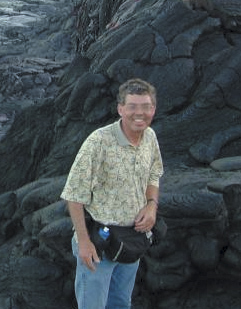
Doug Lung
The FCC TVStudy OET-69 software includes the ability to run studies using actual antenna azimuth and elevations patterns, but it wasn’t until release of Version 1.2.8 that there was a way to apply mechanical beam-tilt only to stations with real antenna patterns. This is critical because applying mechanical beam-tilt to horizontal plane radiation patterns that usually have no relationship to the signal on the ground leads to bogus results. This month I’ll show the impact of using the TVStudy defaults compared with the use of real antenna patterns. The results surprised me!
MECHANICAL BEAM-TILT EXPLAINED
Most UHF and high VHF TV transmitting antennas located on tall towers or mountain tops use some form of beam-tilt to push the signal down to the ground. Sending the signal straight out perpendicular to the antenna would result in much of the signal being lost in space. The beamwidth of the signal from the antenna narrows with increased elevation gain.
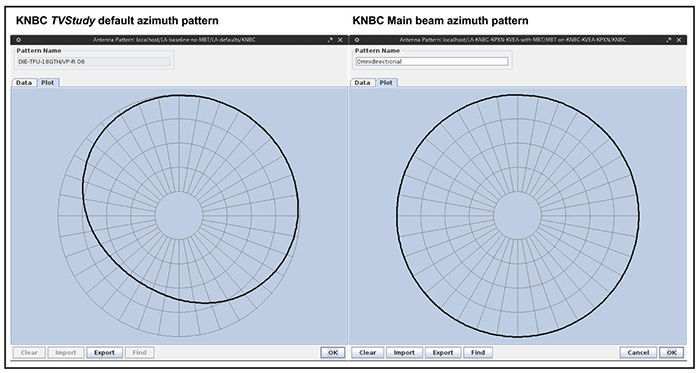
Fig. 1: TVStudy Pattern Editor Plot tab for KNBC
A station on Mt. Wilson, more than 5,000 feet above Los Angeles, would have very little signal on the ground if it used a high-gain antenna without beam-tilt.
A transmitter site located near the center of the population can use electrical beam-tilt (EBT) to provide the same amount of down tilt in all directions around the antenna. In this case, the horizontal plane azimuth pattern will be the same shape as the main beam azimuth pattern with EBT.
However, in markets such as Los Angeles where the antennae are at high elevations near the edge of the population center, mechanical beam-tilt (MBT) is often used with EBT to put more energy into the populated areas and reduce the power wasted over sparsely populated mountains, deserts and ocean.
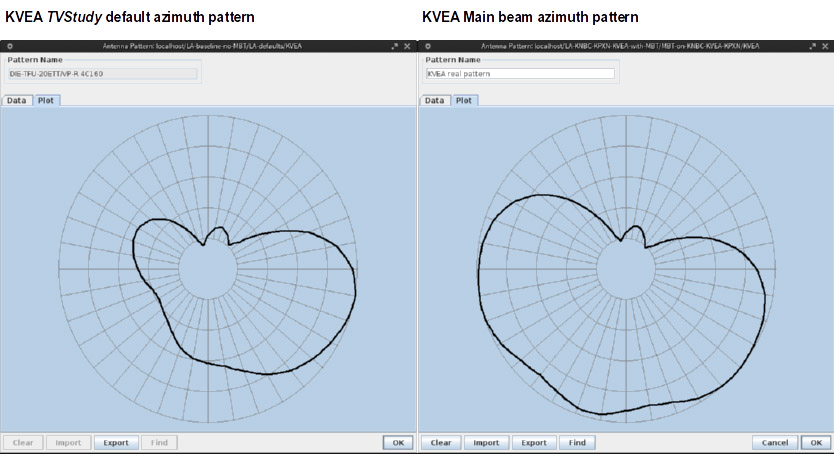
Fig. 2: TVStudy Pattern Editor Plot tab for KVEA
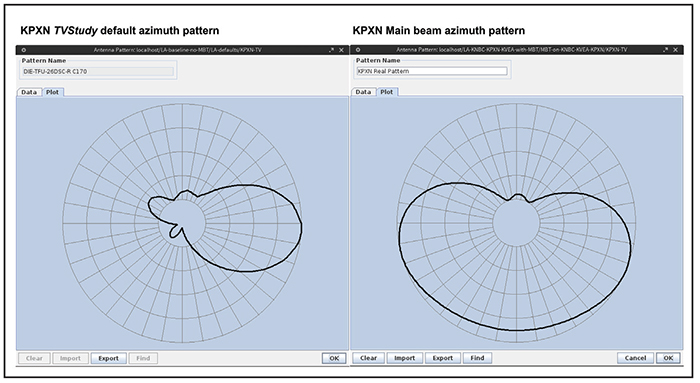
Fig. 3: This shows the KPXN FCC azimuth pattern and the main beam pattern. Like most Mt. Wilson stations, KNBC uses EBT and MBT. The MBT results in the horizontal plane azimuth pattern show less energy over Los Angeles and more over the mountains and high desert to the north. KVEA on Mt. Harvard also uses EBT with MBT and the differences are even greater there.
The patterns shown in Figs. 1 (KNBC) and 2 (KVEA) are from the TVStudy Pattern Editor Plot tab.
USING REAL ANTENNA PATTERNS
During the DTV transition I received a number of emails from companies trying to use FCC antenna patterns to display coverage of Los Angeles area stations. They wondered why the antennas were pointed in the wrong direction. MBT and the resulting horizontal plane radiation pattern are the reason. Let’s look at what happens to the coverage and interference predicted by TVStudy when we use real antenna patterns instead of the FCC horizontal plane pattern.
While stations have to include real azimuth and elevation pattern data on their FCC CP applications, many do not include tabular data in a format easy to convert into a .cvs file for import into TVStudy. The KNBC and KVEA pattern data can be cut and pasted from the data in the engineering exhibits.
ION Media was kind enough to provide a PDF with tabular data on the Dielectric TFU- 26DSC-R C170 used at KPXN-TV. KPXN-TV is an adjacent channel to KVEA and at the same site so it makes an interesting case to see the effect of real vs. bogus antenna patterns on coverage and interference in TVStudy. Fig. 3 shows the KPXN FCC azimuth pattern and the main beam pattern.
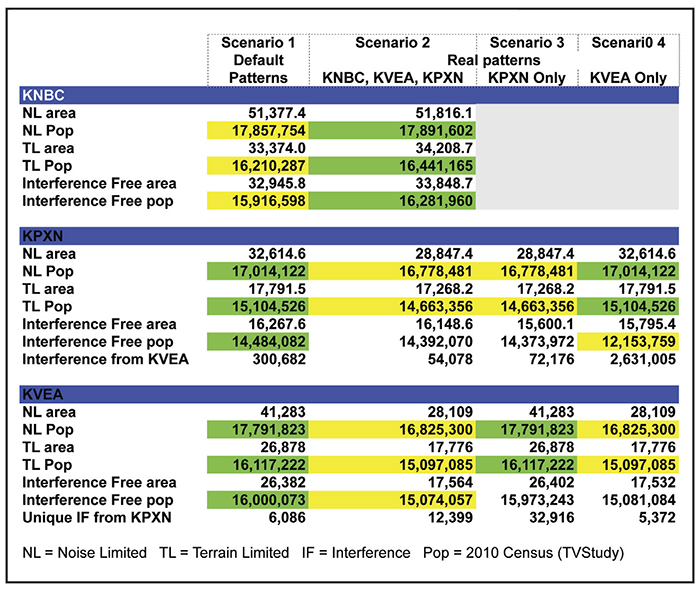
Table 1: TVStudy V 1.2.8: Default vs. Real Patterns My studies for KNBC, KPXN and KVEA were done using TVStudy Version 1.2.8 on Manjaro Linux. Default Study Parameters were used except for real pattern studies where “Use mechanical beam-tilt” in the “Patterns” tab and “Use real elevation patterns for contours” in the “Contours” tab were changed.
In creating scenarios, for station selection I selected “Prefer operating facilities” and “Search by service.” Selected services were DT, DD, DC and CA. “Search by center point and radius” was selected using a 320-kilometer radius around the KNBC tower. “Allow editing” was selected in the scenarios to allow entering real antenna pattern data for the stations, and the box on the edit screen allowing default patterns to be used in some cases was unchecked for scenarios/stations where the real pattern data was used.
Table 1 shows noise-limited coverage, terrain-limited coverage and interference- free coverage for four scenarios: 1) TVStudy default patterns and parameters; 2) Real antennas patterns with mechanical beam tilt for KNBC, KPXN and KVEA; 3) Real antenna patterns for KPXN and defaults for KVEA; and 4) Real antenna patterns for KVEA and defaults for KPXN.
More details are available on the spreadsheets and files I’ve made are available on the file menu at xmtr.com/rf242.
The results surprised me. I did not expect coverage to decrease when accurate antenna models were used. The shrinkage in a noise-limited area (contours) with real patterns was not expected.
Next month I’ll see how the contours from “Use real elevation patterns for contours” match contours plotted at the radio horizon per Part 73 and how some of the other settings affect the results for these three stations.
I’d like to do a test with a pair of adjacent channel stations using mechanical beam-tilt in another market. If you can provide real azimuth and elevation patterns in a text-extractable format for the stations drop me an email at dlung@transmitter.com and if time allows I’ll run the same comparisons on them.
Get the TV Tech Newsletter
The professional video industry's #1 source for news, trends and product and tech information. Sign up below.

Doug Lung is one of America's foremost authorities on broadcast RF technology. As vice president of Broadcast Technology for NBCUniversal Local, H. Douglas Lung leads NBC and Telemundo-owned stations’ RF and transmission affairs, including microwave, radars, satellite uplinks, and FCC technical filings. Beginning his career in 1976 at KSCI in Los Angeles, Lung has nearly 50 years of experience in broadcast television engineering. Beginning in 1985, he led the engineering department for what was to become the Telemundo network and station group, assisting in the design, construction and installation of the company’s broadcast and cable facilities. Other projects include work on the launch of Hawaii’s first UHF TV station, the rollout and testing of the ATSC mobile-handheld standard, and software development related to the incentive auction TV spectrum repack. A longtime columnist for TV Technology, Doug is also a regular contributor to IEEE Broadcast Technology. He is the recipient of the 2023 NAB Television Engineering Award. He also received a Tech Leadership Award from TV Tech publisher Future plc in 2021 and is a member of the IEEE Broadcast Technology Society and the Society of Broadcast Engineers.
